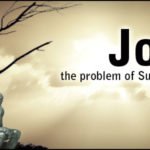Safer Internet Day 2017 Assembly Speech – Mr Mackenzie
Tuesday the 7th February is Safer Internet Day 2017. Now before you all prepare yourself for the standard message of ‘turn your security up and be safe online’, I thought it would be worth reflecting on the extraordinary power of the internet and how much it has affected the world since we last spoke about the internet as a school this time last year.
Oxford dictionaries announced that its international word of the year in 2016 was post-truth. The compound post-truth means: ‘belonging to a time in which truth has become unimportant or irrelevant’.
What a terrifying concept – that facts and truth are no longer important.
Inside us we all know that this is not the case but observing twitter trends and seeing the role they had in propelling the new president to the world’s highest office it should make us all pause and think.
Twitter was without doubt the all-conquering technology of 2016 and it continues to allow a direct stream of Mr Trump’s consciousness to be consumed by his many millions of followers. In the last week alone this has sparked major diplomatic incidents, travel chaos and stock market volatility.
Kellanne Conway, one of President Trump’s closest advisors, spoke of ‘alternative facts’, seeming to legitimise the idea that if an opinion is voiced vociferously and often enough, it becomes fact.
In this case it was referring to the size of the Trump inauguration crowd compared with Obama’s crowd five years earlier. The claim was quickly rebuffed by photographic evidence that showed the comparative crowd sizes.
But, even this seemingly indisputable evidence required some analysis:
– Were the photos taken at the same time of day?
– What was the source?
– Who was the news agency who published the image?
– Had the images been photoshopped?
How do we now believe what is being presented to us online as fact ? Does technology make this task easier or are we in a more confusing world?
Another concept that you might have heard about this year is echo-chambers. This is the idea that the friends we have online and the feeds we read on social media reflect our opinion back to us, thereby reinforcing our views because it feels like everyone else is saying the same thing.
It is one of the reasons I always enjoy a conversation with Mr Mann, as he regularly extols views contrary to my own and is always very willing to challenge my analysis of the world.
Although on opposite sides of the “Great Brexit Debate”, we both recognise the value of opposing viewpoints and perspectives, as it helps us to debate and discuss and to positively seek out a range of different views and opinions. Luckily there is no danger of an echo-chamber in the Geography department, and thankfully Mr Mann has yet to engage with Twitter. If you wish to escape your echo-chamber own (whatever it might be), I can recommend a chat with Mr Mann, although please don’t encourage him too much.
I think these three concepts from 2016 (post truth, alternative facts and echo-chambers).
Show just how important it is to check the veracity of our news stories and to consume a range of media, not just our Facebook or Twitter feeds.
Young people are connected from ever younger ages and are spending more and more time online.
10% of 3 year olds now has their own device, with this figure rising to 60% by the age of 10. 93% Of all British 15 year olds are now connected.

Several leading children’s charities report that the pressure to keep up with friends and have the perfect life online is adding to the sadness and anxiety that young people feel on a daily basis.
The Girl Guide Association girls’ attitudes survey 2016 found that 37% of girls aged 11-21 regularly compared themselves to celebrities. The same survey found over half (54%) of 11-16 year olds often felt that they are not pretty enough
Another 2016 study showed that 30% of 12-15 year olds felt followers, likes and nice comments was very important to their happiness
The 2016 facts are startling:
-
On Instagram images and videos get 8,500 likes and 1,000 comments per second, with photos showing faces are 38% more likely to get ‘likes’ than photos without faces
-
300 million photos are uploaded to Facebook every day
-
There are 400 million snaps on Snapchat each day
-
The equivalent of 110 years of live video is watched on Periscope every day
The scale is astounding and it is fundamentally changing the way humans communicate. This change in communication methods is resulting in us all leaving increasing large digital footprints. A digital footprint is the trail of images and comments you leave online.
These are starting from ever younger ages, in fact even before birth with pregnancy scans routinely added to Facebook as the way of announcing to the world the expectant couple’s news. From this point forward, a digital footprint exists and can be searched by anyone
Posting photos online can be a fantastic way of sharing but it also present the following risks:
THE STORY – The phrase “a picture paints a thousand words” is very true of photos shared online. You should be aware that while we know the stories behind the images we share online, not everyone else does. This can lead to things being misunderstood or misinterpreted.
THE MESSAGE – Images are a very powerful way of conveying messages, ideas and thoughts but can be misunderstood or challenged online by others. An image or meme that shares a joke might be very funny to the person who created or shared it, but might not be appreciated by others who see it and could even be considered offensive. Photos can be edited or altered to change their meaning; which could lead to funny photo becoming an offensive photo.
INVITING CONTACT – Photos can invite contact from others – posting a photo or image encourages other people to give feedback. This could be by ‘liking’ the photo, sharing it on, posting a comment or by sending a message. Depending on the image posted, the comments received can vary. Some images are posted to provoke a reaction (positive or negative) and some are posted without thinking about the possible consequences. An image could be shared with a small group of trusted friends online or publicly to a large online community. This may invite comments and unwanted contact from strangers.
Google search algorithms are becoming faster and more effective despite the exponential growth of online images. if you search for a social media user or account name, any images associated with the account will be returned via a google search. Obscurity due to volume does not happen like it used to. Have you checked your digital footprint by googling your name recently? Or your Twitter handle? Or your Instagram account? – you might be surprised how recent the photos are that returned in a generic Google search.
Please take a minute on to watch the following clips – coffee shop data and Your image, your future.

Please also consider the basic safety features of most of the social media platforms that RHS pupils use.
If you have any concerns about online issues you can always talk to your eCouncils rep, Peer Supporters or one of the Digital Leaders alongside the traditional channels of tutors, SHS, myself, Mr Dixon and Mrs Godfrey.
Whilst being connected gives us tremendous opportunities and benefits, it can also offer significant risks
I think of it a little like walking through a big city you have never visited before – with bright lights, opportunities, shopping and entertainment during the day but also with areas that you might not feel safe or want to wander into at night. Sticking to some basic rules is a bit like having a tube or road map, allowing you to navigate successfully and preventing you from visiting the darker area.
The most important tips are:
-
Think before you post,
-
Regularly check your security settings and passwords,
-
And consider whether your would be happy for your images and posts to be returned on a google search in years to come.















Post Comment
You must be logged in to post a comment.